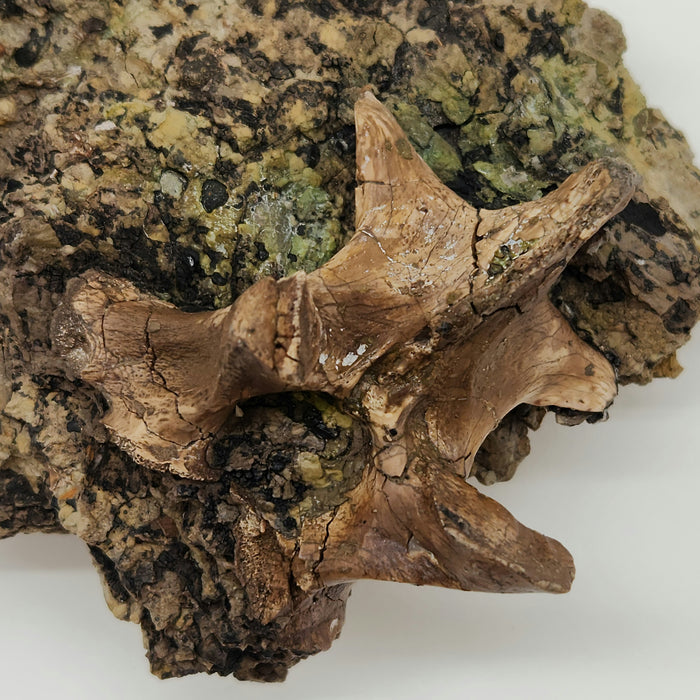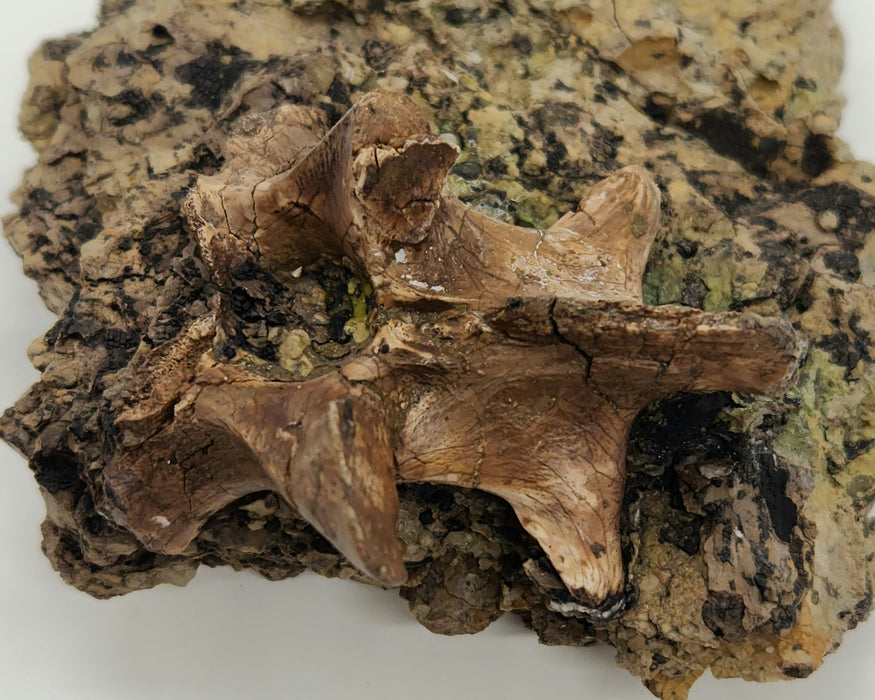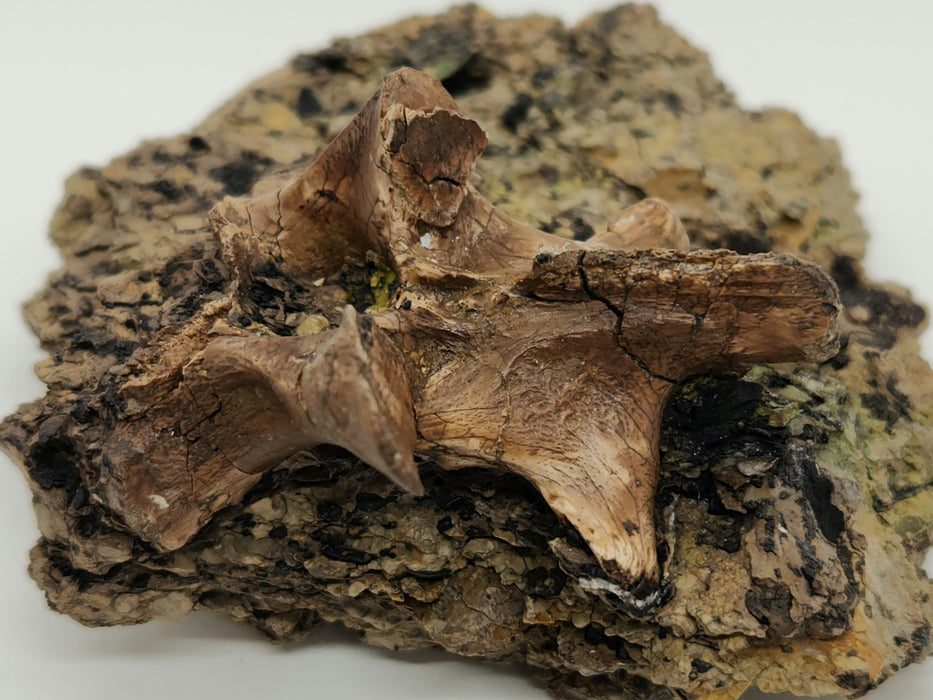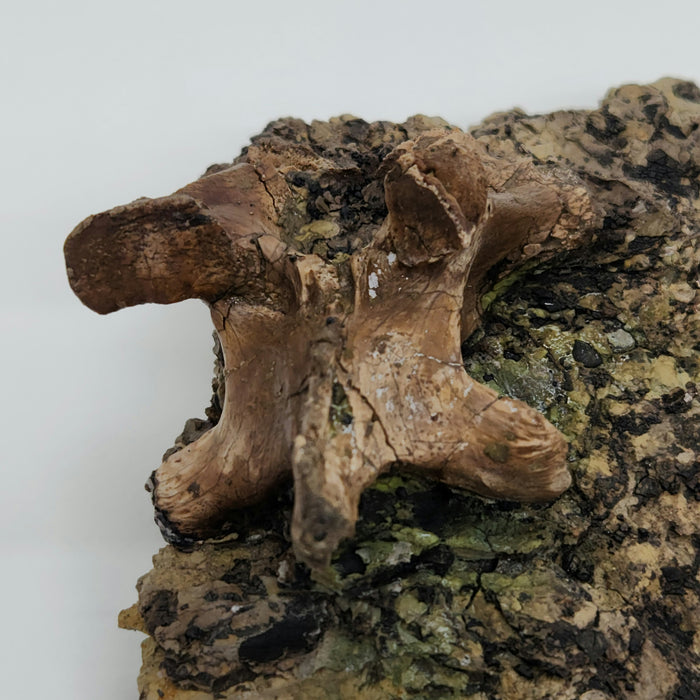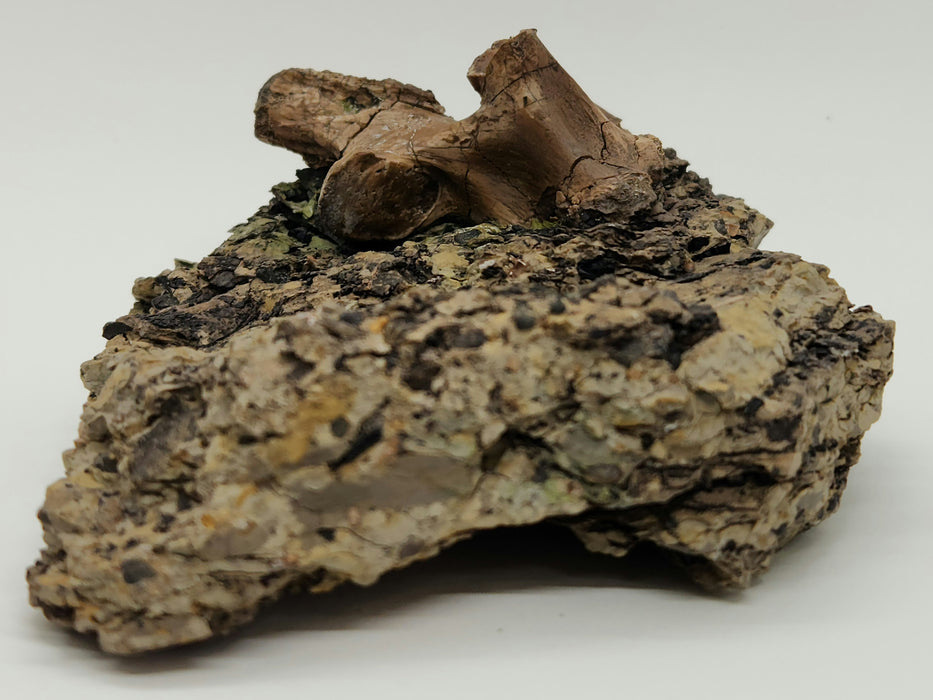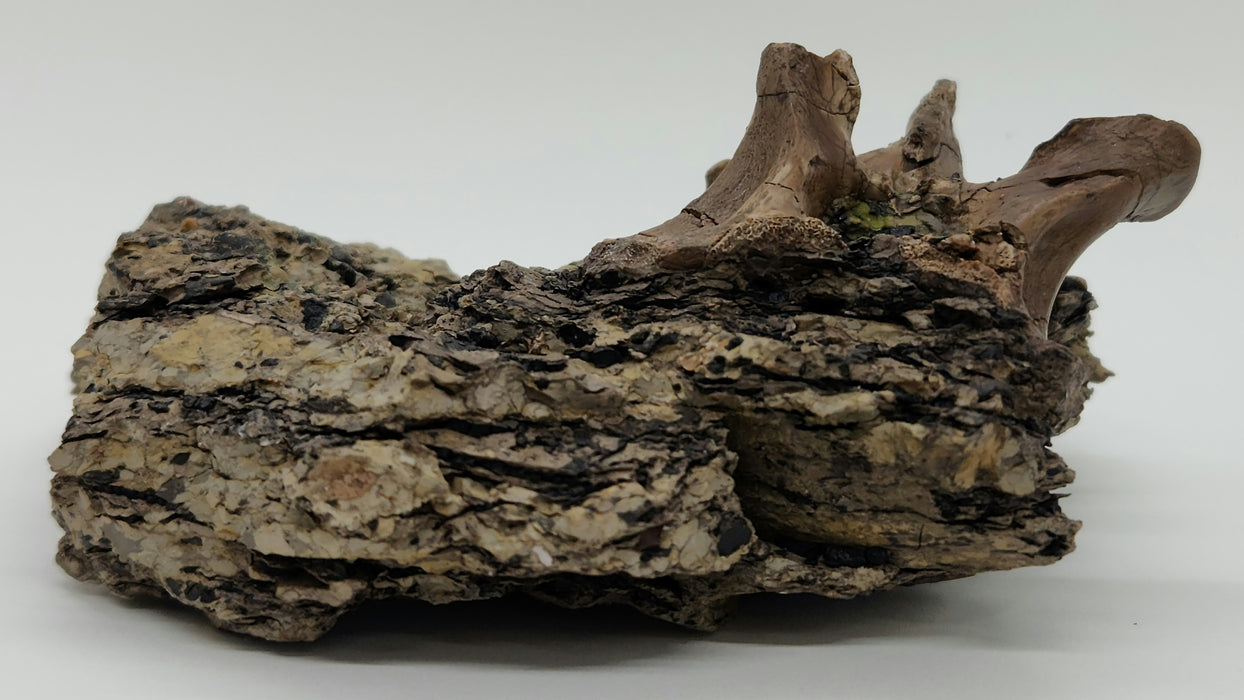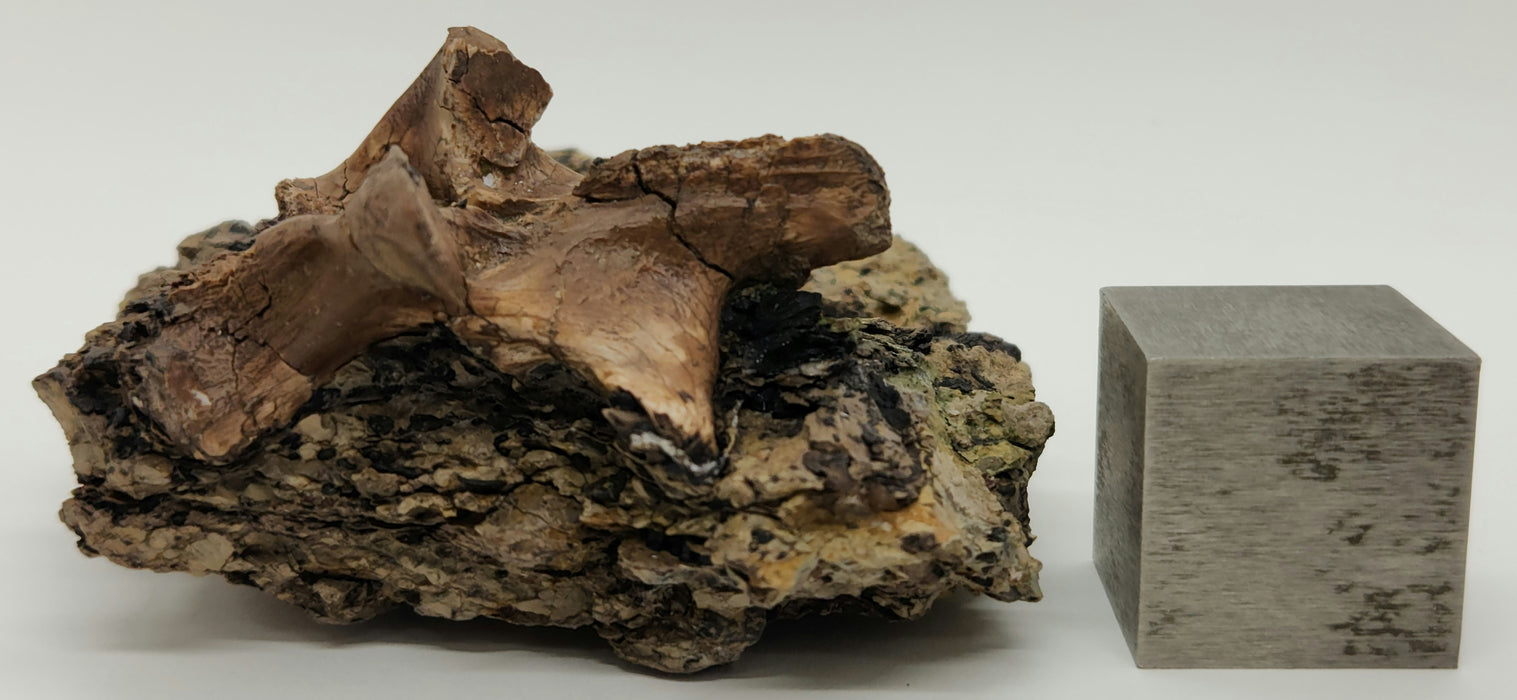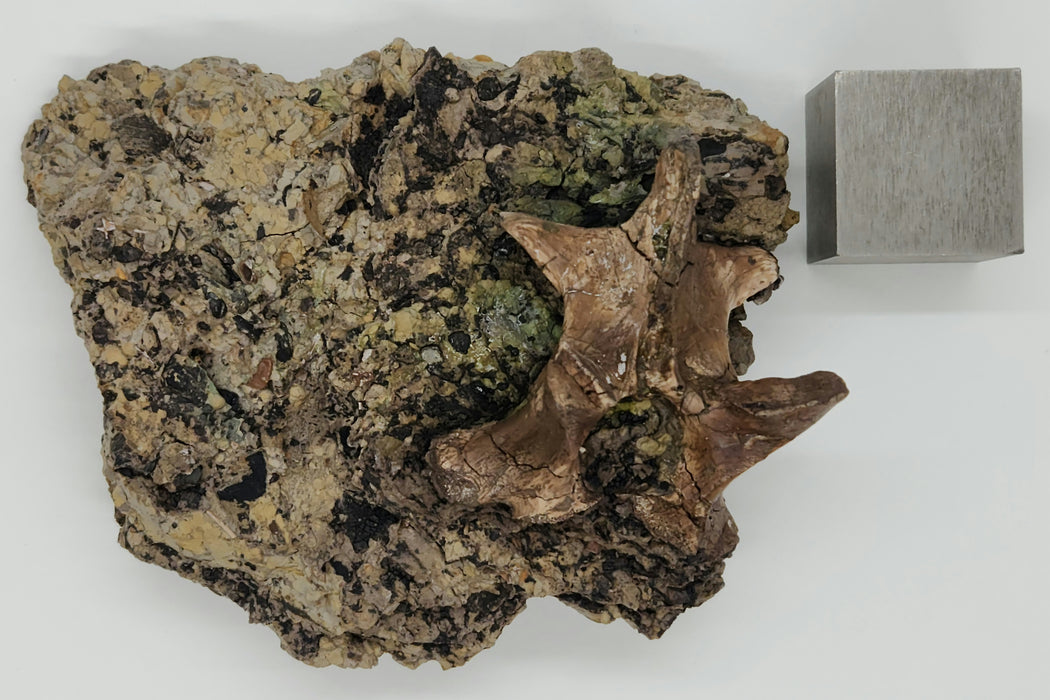
Crocodylomorph Process | Texas
Crocodylomorph Process
Cretaceous - Campanian
Aguja Formation
Brewster County, Texas
Specimen approx. size: 2.25" x 2.25"
Matrix approx. size: 4.5" x 3.5" x 1.75"
Crocodylomorphs are a clade of archosaurian reptiles that include modern crocodilians (alligators, crocodiles, and gharials) and their extinct relatives. They first appeared in the Late Triassic (around 230 million years ago) and have since undergone significant evolutionary diversification, occupying terrestrial, semi-aquatic, and fully aquatic niches.
Crocodylomorphs exhibit a wide range of body plans, from slender, long-limbed terrestrial forms to the robust, armored, semi-aquatic crocodilians of today.
Crocodylomorphs have demonstrated remarkable adaptability over time. Early forms were terrestrial predators, likely competing with theropod dinosaurs, while later species diversified into aquatic environments. Their feeding strategies ranged from active pursuit predators to ambush hunters and even omnivores.
Despite mass extinctions, crocodylomorphs have persisted for over 200 million years, outlasting many other reptilian lineages. Today’s crocodilians represent only a small fraction of their former diversity, with just over 20 extant species remaining.


